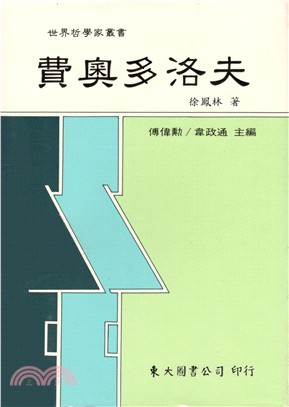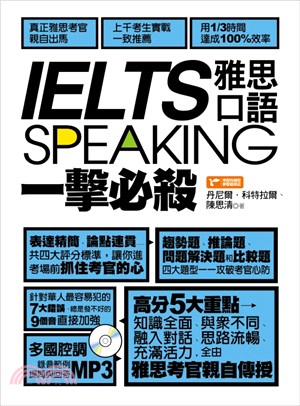The Millionaire's Wife ─ The True Story of a Real Estate Tycoon, His Beautiful Young Mistress, and a Marriage That Ended in Murder
商品資訊
ISBN13:9780312594350
替代書名:The Millionaire's Wife
出版社:St Martins Pr
作者:Cathy Scott
出版日:2012/03/27
裝訂/頁數:平裝/241頁
規格:17.8cm*11.4cm*1.9cm (高/寬/厚)
相關商品
商品簡介
作者簡介
書摘/試閱
商品簡介
The true story of a real estate tycoon, his beautiful young mistress, and a marriage that ended in murder.
MONEY
The beloved son of Holocaust survivors, forty-nine-year-old George Kogan grew up in Puerto Rico before making his way to New York City, where he enjoyed great success as an antiques and art dealer. Until one morning in 1990, when George was approached on the street by an unidentified gunman—and was killed in cold blood.
MADNESS
Before the shooting, George had been on the way to his girlfriends’s apartment. Mary-Louise Hawkins was twenty-eight years old and had once worked as George’s publicist. But ever since they became lovers, George’s estranged wife, Barbara, was consumed with bitterness. As she and George hashed out a divorce, Barbara fueled her anger into greed—especially after a judge turned down her request for $5,000 a week in alimony.
MURDER
Barbara, who stood to collect $4.3 million in life insurance, was immediately suspected in George’s death. But it would take authorities almost twenty years to uncover a link between her lawyer, Manuel Martinez, and the hitman who killed George. In 2010, Martinez agreed to testify against his client…and Barbara eventually pled guilty to charges of grand larceny, conspiracy to commit murder, and first-degree manslaughter. This is the shocking true story of THE MILLIONAIRE’S WIFE.
Includes 8 pages of dramatic photos
MONEY
The beloved son of Holocaust survivors, forty-nine-year-old George Kogan grew up in Puerto Rico before making his way to New York City, where he enjoyed great success as an antiques and art dealer. Until one morning in 1990, when George was approached on the street by an unidentified gunman—and was killed in cold blood.
MADNESS
Before the shooting, George had been on the way to his girlfriends’s apartment. Mary-Louise Hawkins was twenty-eight years old and had once worked as George’s publicist. But ever since they became lovers, George’s estranged wife, Barbara, was consumed with bitterness. As she and George hashed out a divorce, Barbara fueled her anger into greed—especially after a judge turned down her request for $5,000 a week in alimony.
MURDER
Barbara, who stood to collect $4.3 million in life insurance, was immediately suspected in George’s death. But it would take authorities almost twenty years to uncover a link between her lawyer, Manuel Martinez, and the hitman who killed George. In 2010, Martinez agreed to testify against his client…and Barbara eventually pled guilty to charges of grand larceny, conspiracy to commit murder, and first-degree manslaughter. This is the shocking true story of THE MILLIONAIRE’S WIFE.
Includes 8 pages of dramatic photos
作者簡介
Cathy Scott is a veteran crime writer and award-winning investigative journalist. She is the author of several true crime works, includingThe Killing of Tupac Shakur, a Los Angeles Times bestseller, and The Murder of Biggie Smalls. She lives in Las Vegas, Nevada.
書摘/試閱
A Cool Manhattan Morning
A light rain fell over Manhattan on a weekday morning like any other. But life can change on a dime, and that's exactly what happened as middle-aged business tycoon George Kogan hurried back to his ultra-chic Upper East Side apartment with a bag of groceries on each arm in anticipation of breakfasting at home with his young lover. The late morning of Tuesday, October 23, 1990, turned out to be anything but a typical day in the city.
On the busy sidewalk, George, who'd recently celebrated his forty-ninth birthday, turned the corner onto East Sixty-ninth Street and headed toward his mid-block building, between Second and Third. As he hurried down the tree-lined street, he didn't notice anything unusual other than the cool morning temperature. He continued walking toward the canopied entrance to the co-op where he'd lived for the last two years with Mary-Louise Hawkins, a twenty-eight-year-old rising star in the public relations world. Across the street, carpenters noisily worked on the new Trump Palace high-rise apartment building. A few blocks away, Central Park was alive with pedestrians, bicyclists, and joggers as they coursed through the park's major arteries to their destinations in New York City, where the drone of urban traffic awaited them. George enjoyed walking the neighborhood. He'd lose himself in the bustling sights and sounds of the city. And this day was no different.
Walking from the neighborhood Food Emporium, he looked forward to spending the late morning with Mary-Louise. Quiet breakfasts were how their relationship had moved from platonic to romantic, and they especially appreciated those moments. Plus, George was anxious to prepare for an afternoon meeting with his son, William, who was acting as mediator to nail down an agreeable divorce settlement with George's estranged wife, Barbara, and bring to a conclusion the marriage that in essence had ended two years earlier.
As George headed home that morning, William telephoned his father's apartment to confirm their afternoon appointment. Mary-Louise told him she'd have George return the call when he arrived home from the store. George was optimistic about the settlement and finally getting the lengthy divorce behind him, so he and Mary-Louise could move on with their life together. Also uppermost in George's mind was settling the divorce to help repair the damaged relationship he'd had with William, who had sided with his mother after his parents' separation.
As George continued his walk home, the usual cast of characters were out and about-nannies pushing babies in strollers, residents leaving their high-rises to walk their dogs, business people hurrying to the subway entrance just steps away. George, distracted with the nagging thought of the afternoon meeting, quickened his pace when his limestone building came into view.
He lived in the heart of Manhattan's Upper East Side, once called the Silk Stocking District, so named for the attire worn by the rich people who had once lived there. Long gone was the 19th-century farmland, as well as the market and garden districts that had peppered the area. Left were skyscrapers, rows of stylish townhouses, mansions, and the occasional walk-up apartment building.
For a millionaire antiques and art dealer who had once had interests in a casino and several properties in Puerto Rico and New York, George lived a surprisingly modest life on New York's well-to-do Upper East Side-broadly defined as the area from Fifty-ninth to Ninety-sixth Streets, east of Central Park. His living quarters with Mary-Louise Hawkins were definitely nice, although small, with just one bedroom and a marbled-bath washroom. And while the apartment had a prestigious address with the coveted 10021 zip code in a luxurious high-rise complex, it was not quite up to the elite level of Fifth Avenue, which serves as the symbol of wealthy New York, where George once lived with his now-estranged wife Barbara. Still, he admired the high-end building that housed his current apartment.
The Upper East Side has a legacy of outstanding eclectic architecture, including George's pre-war apartment. The façade of his co-op, a mix of limestone and beige brick, created a grand entrance with its surround and above-the-door stone molding, with tall arched relief details and shallow columns on either side and carved renaissance-style capitals. Above that was a heavy, stately ornamental stone molding. The variety of styles added a touch of grace and grandeur from a bygone era. As a connoisseur of fine antiques, George appreciated the artistry that went into the face of the building and enjoyed walking through the double-glass doorway, framed in oak, with its etched Art Deco design. What George could not know was that he would never again walk through that entryway, and the anticipated meeting with his son and his soon-to-be ex-wife to finalize the divorce was not to be. What happened next, he never saw coming.
As he neared the entrance to his Sixty-ninth Street apartment, his face flushed from the damp morning air, what he heard next was startling. It sounded like an explosion, most probably coming from the construction site across the street.
"What the-?" George cried out a nanosecond later, when it dawned on him what the noise really was. It was the distinct sound of gunfire.
No, no, no! he said to himself, and then, Mary-Louise!
The force of the bullets entering George's back thrust him into a forward dive and catapulted him into the air; he landed in a skid on the rain-soaked concrete. He was face down just yards from his apartment lobby. Seconds felt like minutes.
Coins, bills, and groceries-a carton of eggs, a slab of cheese, a bottle of milk, pieces of fresh fruit-tumbled to the ground, along with George.
Sprawled on the sidewalk next to the wall, with his arms stretched out in front of him amidst the scattered groceries and money, George lifted his head and cried out, "Help me!"
The gunman stood a few feet from George. Out of the corner of his eye, the shooter, who showed no emotion, saw someone move. He quickly turned his attention from George toward a woman stepping out of a car parked at the curb. The two locked eyes, and then the assailant, with a cold, determined confidence, turned and hurried away on foot. He looked down and returned the black revolver, still in his left hand, to his waistband, hiding it under his jacket. Then he hurried up the sidewalk.
The shooter fled the scene as quickly as he had entered it. He headed a half-block west on East Sixty-ninth Street to Third Avenue before rounding the corner, turning right, and disappearing into a stream of pedestrians on the crowded sidewalk as he headed north. When the gunman was a safe distance away, he stepped toward the next pay phone he came across and placed a local call.
"It's done," the assassin said into the receiver. He hung up the phone and again disappeared into the morning pedestrian traffic.
Back at Sixty-ninth, lying flat on the concrete, his face ashen and his body alarmingly still, George called out once more. He tried to get up, but it felt as if an irresistible force held him down. He tried shifting his weight, but that didn't work either. Immobilized except for his head and neck, George Kogan rested the side of his face on the cold, wet sidewalk. He felt the light wind against his forehead.
Dark water stains below the air conditioners at each apartment window in George's building marred the exterior marble walls and portions of the concrete sidewalk below, where George lay bleeding.
He was alone. But not for long.
He tried once again to lift his head when he heard footsteps approach. Bystanders stood over him. He was confused. Just then, George heard a familiar voice.
"George! What is it? What happened? Why are you-" trailed Moses Crespo's voice as he viewed with horror the gunshot wounds on George's back and the blood seeping through his red T-shirt. Moses, who worked as a door attendant at Kogan's building, knelt next to George, stretched out on the damp concrete. He asked what had happened.
"I've been shot," George said.
To Moses, George seemed calm. Almost too calm. He was in obvious shock.
"Who did this?" Moses asked.
"I don't-I don't know. I didn't see anyone."
"Relax. Don't worry, George. I'll be right back," Moses said, adding, "Is there anything else?"
"Can you get Mary-Louise? I want-I want to speak to her," George told him.
"Okay," Moses said, then, "You will be all right. We are going to get help."
"I'm dying," George said as Moses hurried away, first to call 911 and then to summon George's girlfriend, Mary-Louise Hawkins.
Within a few long minutes, Mary-Louise walked through the lobby door expecting, per Moses' request, to talk to George. Instead, she found her boyfriend lying on the damp sidewalk in a pool of blood. As she stood under the canopy taking in the scene a few feet away from her, Mary-Louise became unglued. "She went hysterical, screaming and jumping," Moses said. "People had to restrain her." That awful sight, George lying helpless, was what would stay with Mary-Louise, plus the fact that she and George did not get to say good-bye to each other. In the short time that had elapsed since Moses found him, her boyfriend of two years was already slipping in and out of unconsciousness.
Moses would be the last person to speak with George Kogan. At that moment, Moses's mind was racing. He did not know what to think. He remembered George, a few months earlier, asking him not to accept any deliveries for him and not to confirm with anyone that he lived in the building.
Moses also wracked his brain trying to figure out why he had not heard the shots. Even though he had been in the lobby at the time of the shooting, he had not heard the gunfire. He had not known anything was amiss until a few minutes later, when a housekeeper ran to the door and, frightened by the gruesome scene playing out on the sidewalk, pounded on it to be let in. Then Moses realized why he hadn't immediately noticed the shots: Across the street, at 200 East Sixty-ninth Street, construction workers pounded away, literally, on the Trump Palace, a luxury condominium complex that, at fifty-five stories, was the tallest building at the time in Upper Manhattan. Each weekday during construction, workers used air-powered nail guns to build the high-rise.
But the pop, pop, pop Moses thought was from the construction site was in reality the sound of gunfire as an executioner opened fire on George Kogan's back.
A light rain fell over Manhattan on a weekday morning like any other. But life can change on a dime, and that's exactly what happened as middle-aged business tycoon George Kogan hurried back to his ultra-chic Upper East Side apartment with a bag of groceries on each arm in anticipation of breakfasting at home with his young lover. The late morning of Tuesday, October 23, 1990, turned out to be anything but a typical day in the city.
On the busy sidewalk, George, who'd recently celebrated his forty-ninth birthday, turned the corner onto East Sixty-ninth Street and headed toward his mid-block building, between Second and Third. As he hurried down the tree-lined street, he didn't notice anything unusual other than the cool morning temperature. He continued walking toward the canopied entrance to the co-op where he'd lived for the last two years with Mary-Louise Hawkins, a twenty-eight-year-old rising star in the public relations world. Across the street, carpenters noisily worked on the new Trump Palace high-rise apartment building. A few blocks away, Central Park was alive with pedestrians, bicyclists, and joggers as they coursed through the park's major arteries to their destinations in New York City, where the drone of urban traffic awaited them. George enjoyed walking the neighborhood. He'd lose himself in the bustling sights and sounds of the city. And this day was no different.
Walking from the neighborhood Food Emporium, he looked forward to spending the late morning with Mary-Louise. Quiet breakfasts were how their relationship had moved from platonic to romantic, and they especially appreciated those moments. Plus, George was anxious to prepare for an afternoon meeting with his son, William, who was acting as mediator to nail down an agreeable divorce settlement with George's estranged wife, Barbara, and bring to a conclusion the marriage that in essence had ended two years earlier.
As George headed home that morning, William telephoned his father's apartment to confirm their afternoon appointment. Mary-Louise told him she'd have George return the call when he arrived home from the store. George was optimistic about the settlement and finally getting the lengthy divorce behind him, so he and Mary-Louise could move on with their life together. Also uppermost in George's mind was settling the divorce to help repair the damaged relationship he'd had with William, who had sided with his mother after his parents' separation.
As George continued his walk home, the usual cast of characters were out and about-nannies pushing babies in strollers, residents leaving their high-rises to walk their dogs, business people hurrying to the subway entrance just steps away. George, distracted with the nagging thought of the afternoon meeting, quickened his pace when his limestone building came into view.
He lived in the heart of Manhattan's Upper East Side, once called the Silk Stocking District, so named for the attire worn by the rich people who had once lived there. Long gone was the 19th-century farmland, as well as the market and garden districts that had peppered the area. Left were skyscrapers, rows of stylish townhouses, mansions, and the occasional walk-up apartment building.
For a millionaire antiques and art dealer who had once had interests in a casino and several properties in Puerto Rico and New York, George lived a surprisingly modest life on New York's well-to-do Upper East Side-broadly defined as the area from Fifty-ninth to Ninety-sixth Streets, east of Central Park. His living quarters with Mary-Louise Hawkins were definitely nice, although small, with just one bedroom and a marbled-bath washroom. And while the apartment had a prestigious address with the coveted 10021 zip code in a luxurious high-rise complex, it was not quite up to the elite level of Fifth Avenue, which serves as the symbol of wealthy New York, where George once lived with his now-estranged wife Barbara. Still, he admired the high-end building that housed his current apartment.
The Upper East Side has a legacy of outstanding eclectic architecture, including George's pre-war apartment. The façade of his co-op, a mix of limestone and beige brick, created a grand entrance with its surround and above-the-door stone molding, with tall arched relief details and shallow columns on either side and carved renaissance-style capitals. Above that was a heavy, stately ornamental stone molding. The variety of styles added a touch of grace and grandeur from a bygone era. As a connoisseur of fine antiques, George appreciated the artistry that went into the face of the building and enjoyed walking through the double-glass doorway, framed in oak, with its etched Art Deco design. What George could not know was that he would never again walk through that entryway, and the anticipated meeting with his son and his soon-to-be ex-wife to finalize the divorce was not to be. What happened next, he never saw coming.
As he neared the entrance to his Sixty-ninth Street apartment, his face flushed from the damp morning air, what he heard next was startling. It sounded like an explosion, most probably coming from the construction site across the street.
"What the-?" George cried out a nanosecond later, when it dawned on him what the noise really was. It was the distinct sound of gunfire.
No, no, no! he said to himself, and then, Mary-Louise!
The force of the bullets entering George's back thrust him into a forward dive and catapulted him into the air; he landed in a skid on the rain-soaked concrete. He was face down just yards from his apartment lobby. Seconds felt like minutes.
Coins, bills, and groceries-a carton of eggs, a slab of cheese, a bottle of milk, pieces of fresh fruit-tumbled to the ground, along with George.
Sprawled on the sidewalk next to the wall, with his arms stretched out in front of him amidst the scattered groceries and money, George lifted his head and cried out, "Help me!"
The gunman stood a few feet from George. Out of the corner of his eye, the shooter, who showed no emotion, saw someone move. He quickly turned his attention from George toward a woman stepping out of a car parked at the curb. The two locked eyes, and then the assailant, with a cold, determined confidence, turned and hurried away on foot. He looked down and returned the black revolver, still in his left hand, to his waistband, hiding it under his jacket. Then he hurried up the sidewalk.
The shooter fled the scene as quickly as he had entered it. He headed a half-block west on East Sixty-ninth Street to Third Avenue before rounding the corner, turning right, and disappearing into a stream of pedestrians on the crowded sidewalk as he headed north. When the gunman was a safe distance away, he stepped toward the next pay phone he came across and placed a local call.
"It's done," the assassin said into the receiver. He hung up the phone and again disappeared into the morning pedestrian traffic.
Back at Sixty-ninth, lying flat on the concrete, his face ashen and his body alarmingly still, George called out once more. He tried to get up, but it felt as if an irresistible force held him down. He tried shifting his weight, but that didn't work either. Immobilized except for his head and neck, George Kogan rested the side of his face on the cold, wet sidewalk. He felt the light wind against his forehead.
Dark water stains below the air conditioners at each apartment window in George's building marred the exterior marble walls and portions of the concrete sidewalk below, where George lay bleeding.
He was alone. But not for long.
He tried once again to lift his head when he heard footsteps approach. Bystanders stood over him. He was confused. Just then, George heard a familiar voice.
"George! What is it? What happened? Why are you-" trailed Moses Crespo's voice as he viewed with horror the gunshot wounds on George's back and the blood seeping through his red T-shirt. Moses, who worked as a door attendant at Kogan's building, knelt next to George, stretched out on the damp concrete. He asked what had happened.
"I've been shot," George said.
To Moses, George seemed calm. Almost too calm. He was in obvious shock.
"Who did this?" Moses asked.
"I don't-I don't know. I didn't see anyone."
"Relax. Don't worry, George. I'll be right back," Moses said, adding, "Is there anything else?"
"Can you get Mary-Louise? I want-I want to speak to her," George told him.
"Okay," Moses said, then, "You will be all right. We are going to get help."
"I'm dying," George said as Moses hurried away, first to call 911 and then to summon George's girlfriend, Mary-Louise Hawkins.
Within a few long minutes, Mary-Louise walked through the lobby door expecting, per Moses' request, to talk to George. Instead, she found her boyfriend lying on the damp sidewalk in a pool of blood. As she stood under the canopy taking in the scene a few feet away from her, Mary-Louise became unglued. "She went hysterical, screaming and jumping," Moses said. "People had to restrain her." That awful sight, George lying helpless, was what would stay with Mary-Louise, plus the fact that she and George did not get to say good-bye to each other. In the short time that had elapsed since Moses found him, her boyfriend of two years was already slipping in and out of unconsciousness.
Moses would be the last person to speak with George Kogan. At that moment, Moses's mind was racing. He did not know what to think. He remembered George, a few months earlier, asking him not to accept any deliveries for him and not to confirm with anyone that he lived in the building.
Moses also wracked his brain trying to figure out why he had not heard the shots. Even though he had been in the lobby at the time of the shooting, he had not heard the gunfire. He had not known anything was amiss until a few minutes later, when a housekeeper ran to the door and, frightened by the gruesome scene playing out on the sidewalk, pounded on it to be let in. Then Moses realized why he hadn't immediately noticed the shots: Across the street, at 200 East Sixty-ninth Street, construction workers pounded away, literally, on the Trump Palace, a luxury condominium complex that, at fifty-five stories, was the tallest building at the time in Upper Manhattan. Each weekday during construction, workers used air-powered nail guns to build the high-rise.
But the pop, pop, pop Moses thought was from the construction site was in reality the sound of gunfire as an executioner opened fire on George Kogan's back.
主題書展
更多
主題書展
更多書展本週66折
您曾經瀏覽過的商品
購物須知
外文書商品之書封,為出版社提供之樣本。實際出貨商品,以出版社所提供之現有版本為主。部份書籍,因出版社供應狀況特殊,匯率將依實際狀況做調整。
無庫存之商品,在您完成訂單程序之後,將以空運的方式為你下單調貨。為了縮短等待的時間,建議您將外文書與其他商品分開下單,以獲得最快的取貨速度,平均調貨時間為1~2個月。
為了保護您的權益,「三民網路書店」提供會員七日商品鑑賞期(收到商品為起始日)。
若要辦理退貨,請在商品鑑賞期內寄回,且商品必須是全新狀態與完整包裝(商品、附件、發票、隨貨贈品等)否則恕不接受退貨。
























